Panel 8: The Food Web
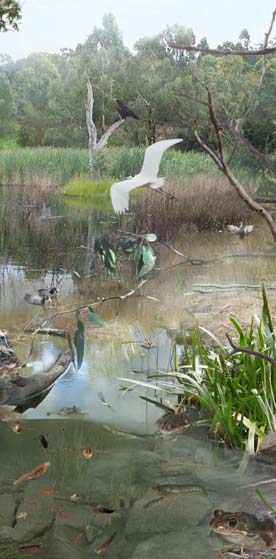
Generally animals eat things that are smaller than themselves. Herbivores eat vegetable matter, carnivores eat other animals, omnivores eat both vegetable matter and other animals. In the Estuary environment their are also animals known as filter feeders that filter their food out of the water and detrivores that feed on the remnants of dead animals within the system. These animals are generally very small and they are all very important as they keep the water clean and provide a food for the larger animals.
Both the river and the wetland have complex microscopic food webs which contain producers (bacteria and microalgae), herbivores, predators and detritivores, which eat plant litter and dead organisms. As things get visible at one to two millimetres and larger they are described as macroinvertebrates which include again worms, crustaceans, molluscs and insects in the freshwater systems. These become part of the diet of many of the species of fish, reptiles, amphibians, birds, mammals and humans.
Animals

SPOTTED MARSH FROG
The Spotted Marsh Frog is most often found in wet areas, flood-plains and semi-permanent water habitats including shrublands and grasslands. In dry periods it shelters in cracks in the ground, usually under large rocks.

WEDGE-TAILED EAGLE
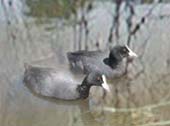
COOT

INSECTS
Insects are virtually absent from the sea, and estuaries however they are quite abundant in freshwaters and on the land and air around them. The juveniles of some species live their lives entirely in the water.
(insect) kam-kam-koor (W)
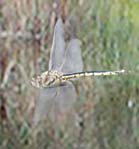
DRAGONFLY
The dragonfly has been on the earth for more than 300 million years, since before the dinosaurs appeared, and is one of the most efficient aerial predators in the insect world.
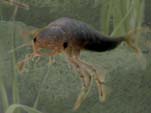

DRAGONFLY LARVAE
Much of a dragonfly’s life is spent in the larval stage in slow moving or stagnant water where it moults six to 15 times before emerging from the water. During this stage it is also a predator.

MOSQUITO – guguk (B)
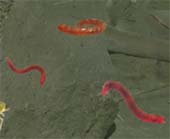
MIDGES
Midges are amongst the most numerous insects on the floodplain. They have lightning-fast lifecycles which allow them to breed up in vast numbers in just a few days. The larvae of some species (Chironomus) are called ‘bloodworms’ and are typical of organically polluted waters.
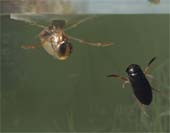
BACKSWIMMERS
Backswimmers are predators which eat insects from the surface. They also eat other smaller aquatic animals, including bloodworms, aquatic larvae and small fish. They carry a silvery air bubble for breathing underwater which is held in place by the little “hairs” that cover its body.

LEECH
Leeches generally live in slow moving or stagnant waters and are predators which can such the insides from worms or suck the blood from larger animals. This one is carrying a brood of babies.
(Leech) ter rum be leet (W))

YABBIE
Images of each of the animals in this exhibition are available to purchase in a high-resolution format. All enquiries should be directed to admin@livingmuseum.org.au or by telephone on +613 9318 3544.
